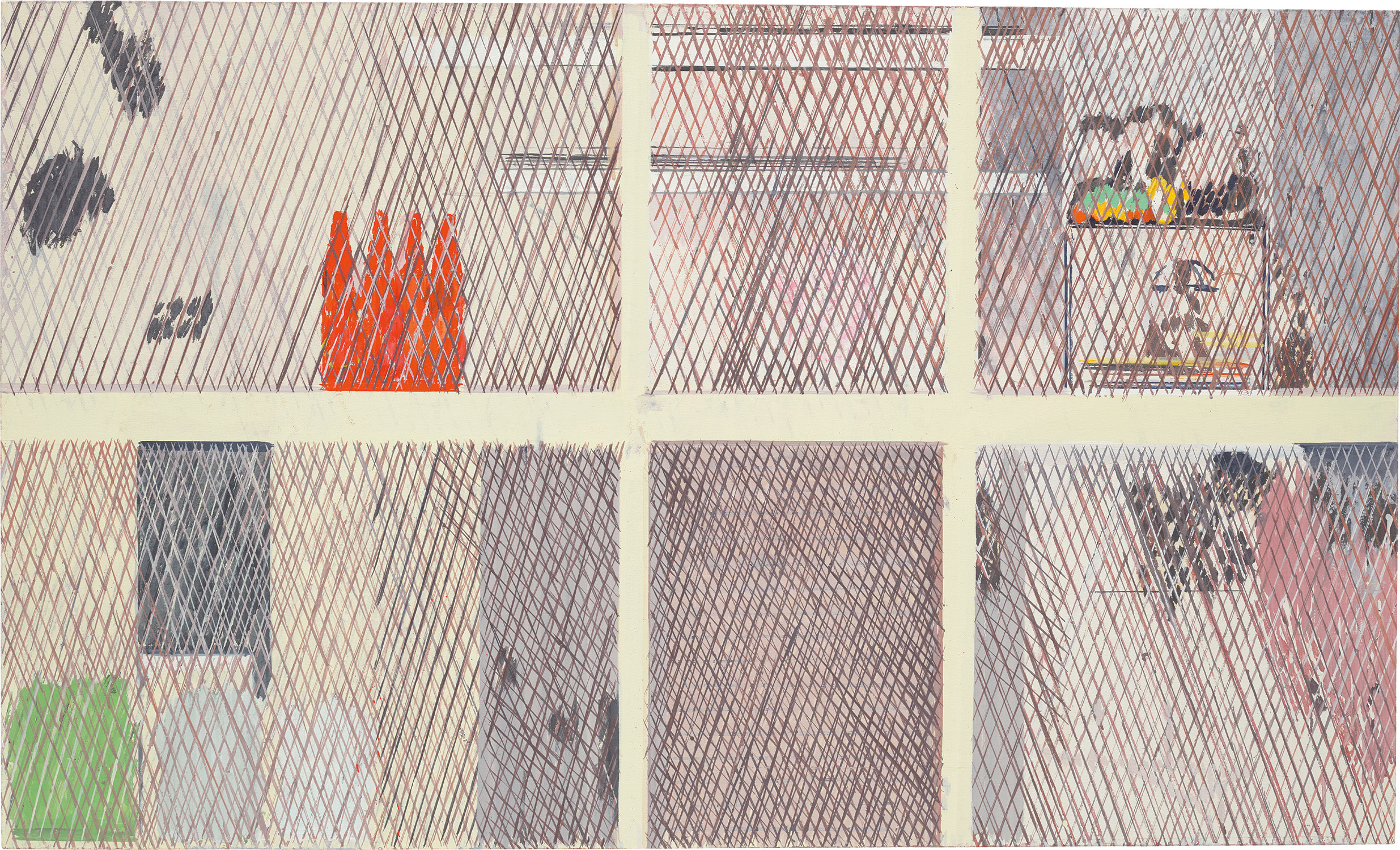

27Ο
Hurvin Anderson
Marlene’s
signed with the artist's initials, titled and dated '''Marlene's'' April 2005 H.A' on the overlap; further titled 'Marlene's' on the stretcher
oil on canvas
88.4 x 146 cm (34 3/4 x 57 1/2 in.)
Painted in April 2005.